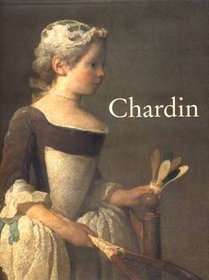Search -
Chardin
Chardin
Author:
Jean Simeon Chardin (1699-1779) started his career with a great interest in still life, a subject held in particularly low regard by the Royal Academy of Painting and Sculpture. According to the Academy, the most important paintings contained human figures (most highly ranked were mythological or historical subjects) and paintings with no human... more »
Author:
Jean Simeon Chardin (1699-1779) started his career with a great interest in still life, a subject held in particularly low regard by the Royal Academy of Painting and Sculpture. According to the Academy, the most important paintings contained human figures (most highly ranked were mythological or historical subjects) and paintings with no human... more »
ISBN-13: 9780300083484
ISBN-10: 0300083483
Publication Date: 5/2000
Pages: 360
Rating: ?
ISBN-10: 0300083483
Publication Date: 5/2000
Pages: 360
Rating: ?
0 stars, based on 0 rating
Publisher: Yale University Press
Book Type: Hardcover
Other Versions: Paperback
Members Wishing: 0
Reviews: Amazon | Write a Review
Book Type: Hardcover
Other Versions: Paperback
Members Wishing: 0
Reviews: Amazon | Write a Review
Genres:
- Arts & Photography >> Individual Artists >> ( A-C ) >> Chardin, Jean Baptiste Simeon
- Arts & Photography >> Individual Artists >> General
- Arts & Photography >> History & Criticism >> General
- Arts & Photography >> History & Criticism >> Regional >> European




